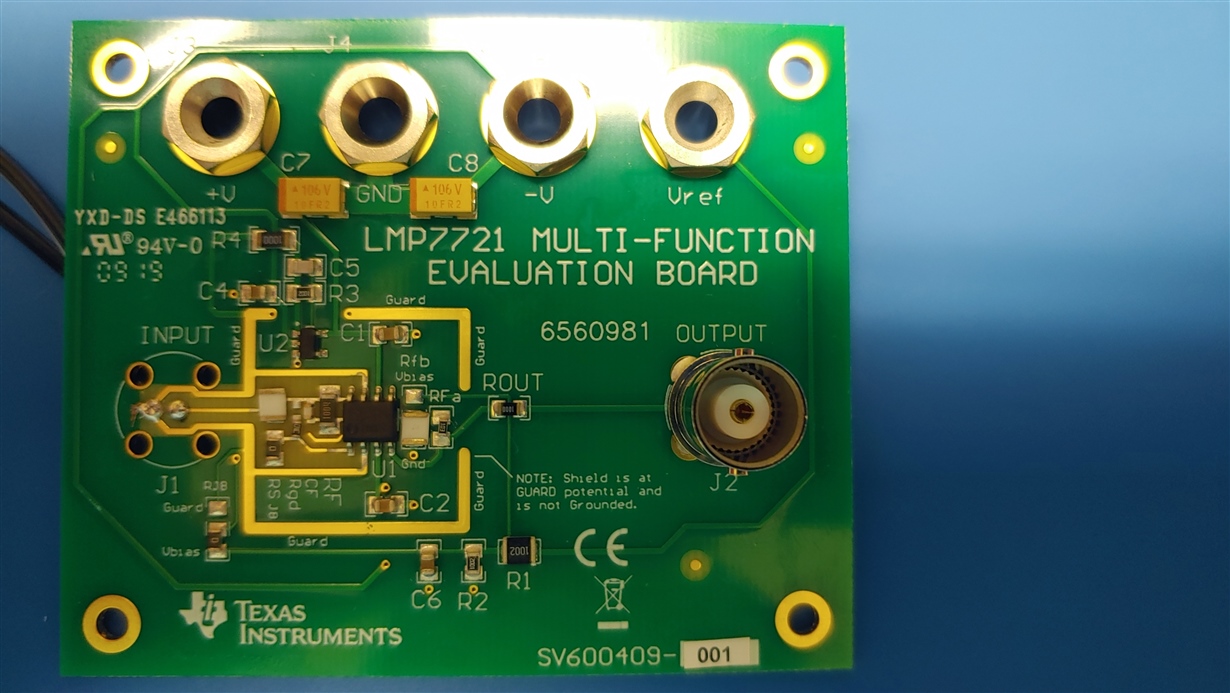Part Number: LMP7721MAEVALMF_NOPB
I have a LMP7721 evaluation board that I am trying to put into a transimpedance amplifier mode. I am trying to measure the leakage current of capacitors. When I test the LMP7721 evaluation board with a 1G resistor at 1V the output of the LMP7721 will either rail or oscillate at 60Hz. Does anyone have any advice as to what I am doing wrong? I have attached a photo of how I changed the evaluation board, and a schematic I have been using.DOC_2000010100004400085_001.pdf

